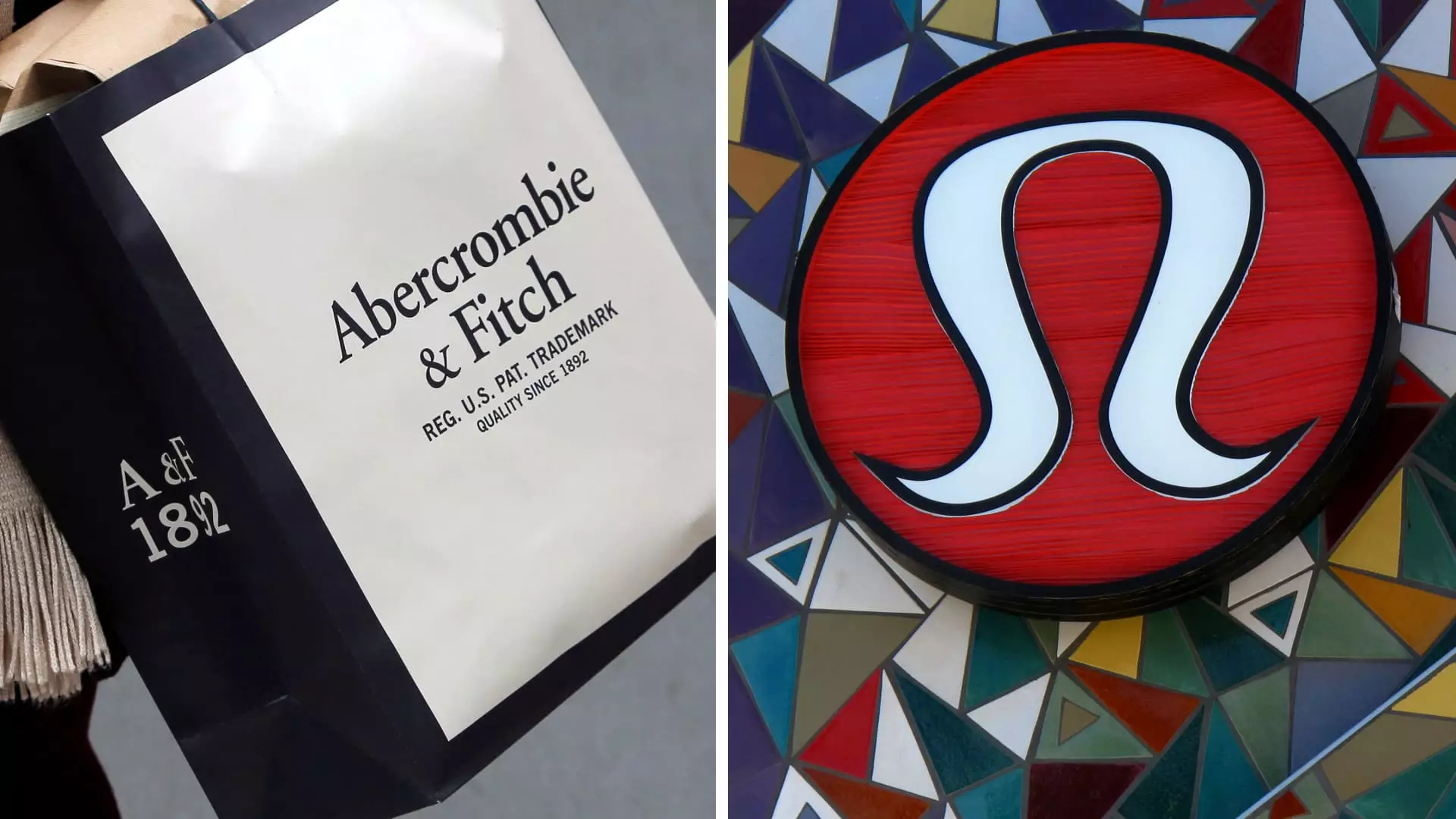As the holiday shopping season unfolds, major retailers have reported encouraging early results that surpassed market expectations. However, despite positive sales outlooks from notable brands like Lululemon, Abercrombie & Fitch, and American Eagle, the stock market’s response has been less than enthusiastic, causing shares to decline. This article will explore the underlying reasons for the tepid market reactions, the implications of the mixed signals from retailers, and what the future might hold as we move into the new year.
The holiday season is traditionally a pivotal time for retailers, often accounting for a significant portion of their annual revenue. Lululemon has exhibited a strong performance, raising its sales forecast for the fourth quarter to between $3.56 billion and $3.58 billion, bolstered by a positive consumer response to its offerings. Moreover, the company’s outlook for earnings per share has improved, reflecting stronger-than-anticipated margins and sales growth. Similarly, Abercrombie & Fitch adjusted its growth expectations upward, signaling that its holiday sales might be slightly better than projected.
Yet, despite these promising forecasts, stock values for these companies took a hit following their announcements. Abercrombie’s shares notably fell nearly 17%, leading investors to speculate whether the brand’s growth trajectory might be reaching its peak. The declines are perplexing, considering the positive sales revisions and an overarching trend of consumer spending resilience during the holiday season.
The disparity between robust sales growth and declining stock prices raises questions about investor sentiment and market expectations. It suggests a cautious outlook as companies like Abercrombie face comparisons to previously stellar performance. Investors have been treating last year’s monumental holiday season growth—21% for Abercrombie—with skepticism, leading to fears that the brand’s market share and consumer loyalty may be stabilizing or contracting.
Chief Financial Officer of Abercrombie, Fran Horowitz, expressed confidence in the company’s ability to preserve its strong brand identity and profitability, indicating a shift in strategy towards sustainable, profitable growth. This implies that the company is focusing on long-term stability rather than short-term revenue booms, which may not excite investors who seek immediate returns.
Lululemon’s forecasts, contrasting those of Abercrombie, indicate a belief in the brand’s capacity to continue captivating its consumers. However, market reactions suggest that many investors remain on edge, anxiously anticipating broader economic factors that may impact consumer spending.
The Broader Retail Landscape: Gains and Losses
While some retailers like Lululemon and American Eagle have raised their earnings projections, the overall retail environment is showing signs of volatility. Macy’s struggles were particularly pronounced, as it issued a bleak outlook, projecting sales below its previous estimates. A drop in its stock price of over 6% underscores the challenge facing traditional department stores as they navigate shifting consumer preferences and competitive pressures.
Urban Outfitters also shared a mixed bag in its early holiday reporting—while the rental service Nuuly surged by 55%, the namesake brand faltered, underscoring the disparity in performance among its various segments. Such inconsistencies illustrate the complexity of current retail dynamics and how rapidly consumer trends can evolve.
Despite the challenges, the National Retail Federation anticipates moderate growth in retail sales, which suggests that, although not explosive, consumer confidence is still intact. Mastercard SpendingPulse reported a year-over-year increase of 3.8% in retail sales (excluding automotive) in the lead-up to the holiday season, hinting at a cautious but resilient consumer base.
Looking Ahead: What’s Next for Retail?
As we pivot toward 2025, the outlook for the retail sector remains mixed. Companies are committing to strategies that prioritize long-term growth, with an emphasis on profit margins over sheer revenue. This strategic shift may offer stability amid economic uncertainty, but it does not guarantee immediate investor confidence.
Retailers will need to navigate this complex landscape carefully, balancing the pursuit of profitability with the ever-changing demands of consumers. Innovations in e-commerce, sustainable practices, and customer engagement will be critical in maintaining market relevance and shareholder trust as they head into the next fiscal year.
While early indicators suggest a healthy holiday season, the juxtaposition of solid sales results against declining stock values highlights a disconnect between operational success and market perception. Stakeholders will surely be monitoring the unfolding narratives in retail, as the sector adapts to its latest challenges and opportunities.

